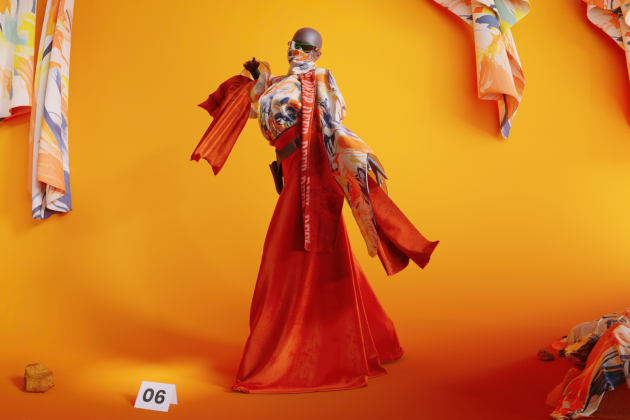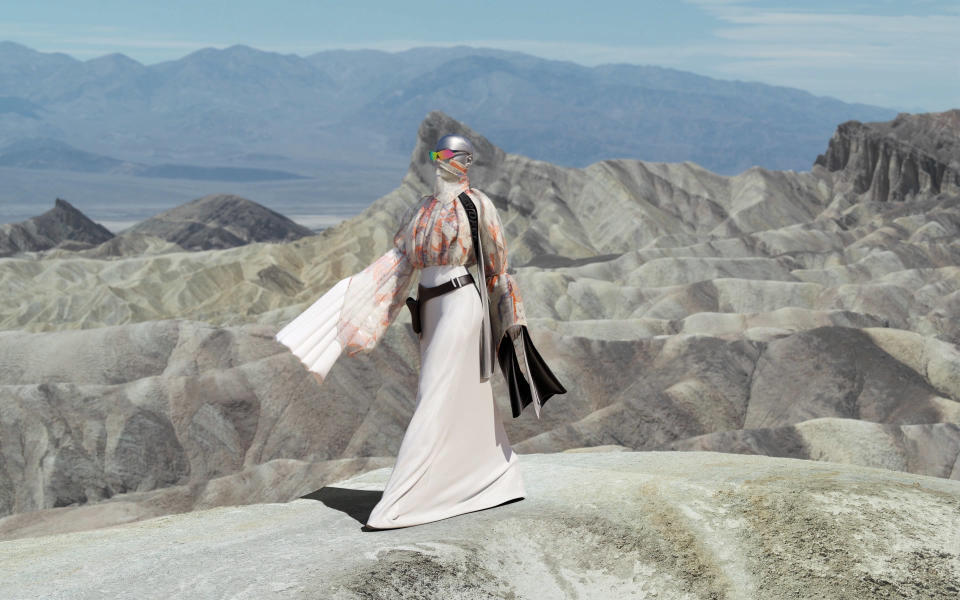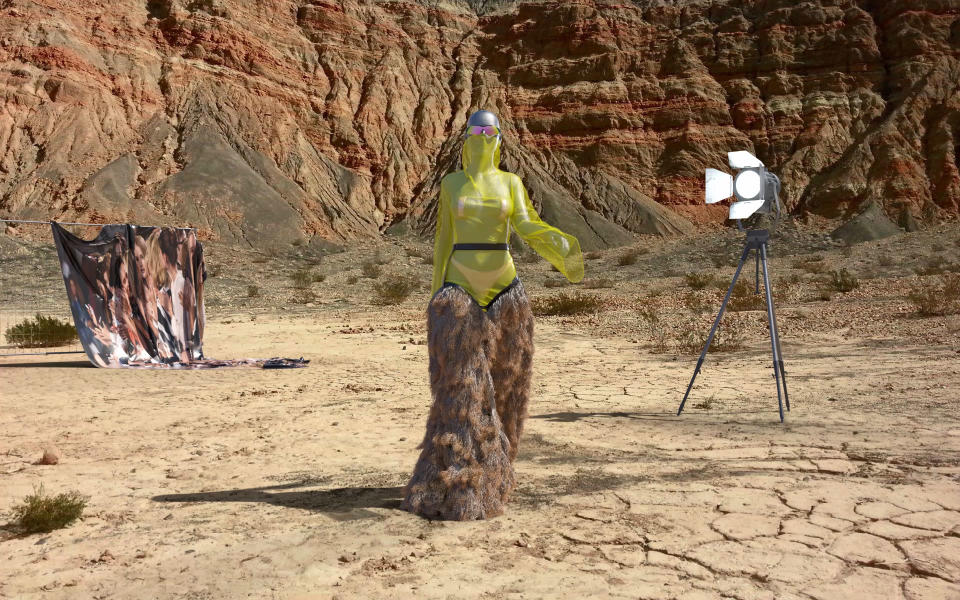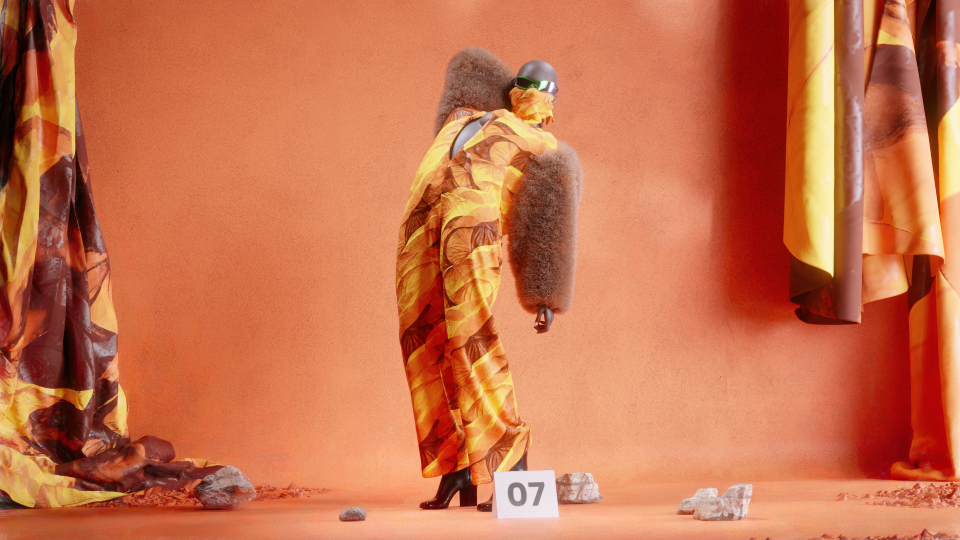The Fabricant’s Fifth Anniversary: Ethereum, Revamped Collection, AI and More

For its fifth anniversary, The Fabricant makes no bones about its visions of grandeur. In addition to celebrating the occasion with a revamped Deep collection, with artificial intelligence reimagining one of its earliest offerings, it is expanding the digital fashion platform with new integrations.
These moves matter, executives told WWD in an exclusive interview, because they represent the company’s next step in its evolution — and its ambitions to advance virtual fashion as a whole. The plan, they said, was to finally turn digital fashion into a mainstream movement.
More from WWD
Sheila Metzner's Fashion Photography Journey on Display at the Getty Center in L.A.
Iris van Herpen Explores Outer Reaches of Fashion Possibilities
The work has already begun. It starts with opening up availability for virtual fashion. For Kerry Murphy, cofounder and chief executive officer, and chief technology officer Marco Marchesi, that translates to expanding The Fabricant’s platform to Ethereum, one of the crypto world’s top decentralized blockchain networks, as a way to become a multichain platform. Meanwhile, it is also integrating with Crossmint, which builds tools that make it easier for businesses to build NFTs at scale.
Metaverse skeptics could criticize moves like this, given the tech’s downturn as a cultural phenomenon. But blockchain evangelists beg to differ, and corporate America as well as global brands seem to agree. Not only have fashion brands continued to invest in virtual technology and metaverse initiatives, but Crossmint — a popular NFT partner for some of the world’s most recognizable companies — recently inked another notable deal with Coinbase.

In an August social media share, the company announced that “the world’s coming on-chain. @coinbase is integrating @crossmint to help Coca-Cola, Atari, and other major companies onboard the world to Web3.” That follows the June launch of its NFT “wallet-as-a-service” to help companies put simplified, interoperable blockchain technologies into their existing products. The same month, rapper Snoop Dogg released a “dynamic” NFT collection, which evolves alongside his tour. He used Crossmint, which can work with fiat currency, as the NFT payment processor.
“Crossmint is the perfect partner to really remove the friction between payments and experience that you get with NFTs,” said Marchesi. “That’s the name of the company itself, ‘Crossmint,’ so they really don’t care anymore what currency you’re using at other servers. And that’s what we need for our community, for our users.”
With the Ethereum play, The Fabricant’s digital fashions — its own or those of its brand partners — are poised to become more available to a greater number of consumers.
Linking to Ethereum is something of a homecoming for the company. “We sold the world’s first digital fashion couture NFT on Ethereum, back in 2019,” explained Murphy, referring to a high-profile collaboration between The Fabricant and artist Johanna Jaskowska, CryptoKitties and Dapper Labs that resulted in a digital blockchain dress called “Iridescence.” The NFT was hailed as the world’s first virtual-only haute couture dress and sold for close to $10,000.
The project was more about making a statement about digital fashion, said the CEO, and at the time, it prompted the press to wonder why anybody would pay such a high price for clothing that didn’t actually exist. But soon enough, COVID-19 changed the equation, with people living more of their lives online amid widespread lockdowns. “We became one of the most relevant companies in the fashion industry, and we had all the physical fashion brands calling us up asking, ‘What is this digital fashion about?’” he added.
As he reflected on his company’s five-year journey, it’s clear that it was quite a whirlwind studded with major figures in gaming, from establishment giant Atari to Web3 hit Star Atlas, and notable names in fashion spanning Rtfkt, the digital sneaker start-up-turned-Nike business, to Virgil Abloh. The Fabricant has been at the heart of millions of dollars in NFT transactions and other investments and not just for partners. In 2021, it scored $14 million in series A funding, which was perhaps fortunate timing. The following year saw a cryptomarket crash that took the shine off of cryptocurrencies and, to some degree, NFTs.
Murphy was quick to note that The Fabricant is not a crypto company, but it does work with the same underlying blockchain technology, so it felt the ripples. “[We] had to really detach ourselves from the narrative of crypto NFT and metaverse, and really focus on digital fashion,” he said, describing it as a highly successful shift.
Now the company is ready to move forward and, once again, timing may be on its side, given recent advancements in artificial intelligence, brands’ growing digital sophistication and greater consumer understanding of virtual experiences. Case in point: The revamped version of Amber Jae Slooten’s Deep collection, as reimagined using generative AI. The original was never available “on chain” before, but the collection totaling seven items will drop on Dec. 14 as part of The Fabricant’s Ethereum expansion.


As for the future, Marchesi pointed to new experiences in development, such as augmented reality dressing. It remains a holy grail in digital fashion, and The Fabricant partnered with Snap Inc. to enable it and, by doing so, it joined myriad players from Google to DressX pursuing the same thing. The key is to not let the technology or complexity get in the way. The CTO sees it as “part of our vision, [which] is about, everyone should be able to wear digital fashion in any context with any device.” The Fabricant quietly launched AR try-on as a beta feature of its platform, as it has been a work in progress, but it’s ready to call more attention to it now.
Another area of interest is using virtual fashion and realistic AI models for photo shoots. The company wouldn’t disclose details on that on the record, but it is actively exploring this.
There’s more happening on the fashion front, including some sort of upcoming collaboration with a notable luxury brand, though neither Murphy nor Marchesi could offer details at press time. But coming on the heels of this slew of updates, exploratory projects and efforts in development, it’s unlikely to be a rank-and-file debut.
Whether any of it succeeds in drawing mainstream interest remains to be seen. But one thing seems quite clear — The Fabricant’s swirl of activity in the last five years might be nothing compared to what the next five brings.
Best of WWD


